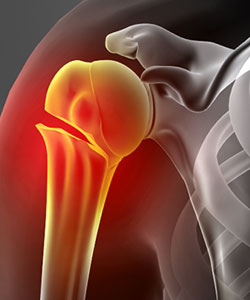
A Bone Fracture
A bone fracture is a medical condition in which a bone is cracked or broken. It is a break in the continuity of the bone. While many fractures are the result of high-force impact or stress, bone fractures can also occur because of certain medical conditions that weaken the bones, such as osteoporosis.
A fracture may be complete or partial and is commonly caused by trauma due to a fall, motor vehicle accident or sports injury. Thinning of the bone due to osteoporosis in the elderly can also cause bones to break easily. Overuse injuries are a common cause of stress fractures in athletes.
Types of fractures
- Simple fracture: The fractured pieces of bone are well aligned and stable
- Unstable fracture: the fragments of the broken bone are misaligned and displaced
- Open (compound) fracture: A severe fracture in which the broken bones protrude through the skin. This type of fracture is more prone to infection and requires immediate medical attention.
- Greenstick fracture: A fracture unique to children, where one side of the bone is broken while the other is bent
Fracture Healing
Our body reacts to a fracture by protecting the injured area with a blood clot and callus or fibrous tissue. Bone cells begin forming on either side of the fracture line. These cells grow towards each other and eventually close the fracture.
Medical Therapy
The objective of early fracture management is to control bleeding, prevent ischemic injury (bone death) and to remove sources of infection such as foreign bodies and dead tissues. The next step is the reduction of the fracture and its maintenance. It is important to ensure that the involved part of the body returns to its function after the fracture heals. To achieve this, fracture reduction and immobilization are achieved by either a non-operative or surgical method.
Non-operative (closed) therapy uses casting and traction (skin and skeletal traction).
Casting
This is done for any fracture that is displaced, shortened, or angulated. Splints and casts are made of fiberglass or Plaster of Paris (POP) and are used to immobilize the limb.
Traction
This method is used for fractures and dislocations that cannot be treated by casting. There are two methods of traction: skin traction and skeletal traction.
Skin traction involves attachment of traction tapes to the skin of the limb segment below the fracture. In skeletal traction, a pin is inserted through the bone and attached to ropes. Weights are applied, and the patient is placed in a traction apparatus. This method is commonly used for fractures of long bones.
Surgical Therapy
Open Reduction and Internal Fixation (ORIF)
This is a surgical procedure in which the fracture site is exposed while a reduction of the fracture is done. Internal fixation is done with wires, plates, screws, and nails.
External fixation
This is a procedure in which the fracture stabilization is done outside the body using rods screwed into the bone above and below the fracture that exit the body and are attached to a stabilizer device that may be adjusted. It helps to maintain bone length and alignment without casting.
External fixation is performed in the following conditions:
- Open fractures with soft-tissue involvement
- Burns and soft tissue injuries
- Pelvic fractures
- Comminuted (shattered) and unstable fractures
- Fractures having bony deficits
- Limb-lengthening procedures
Fractures with infection or non-union (fails to heal)
Rehabilitation
Fractures may take several weeks to months to heal completely. You should limit your activities even after the removal of the cast or brace so the bone becomes solid enough to bear stress. Rehabilitation programs involve exercises and a gradual increase in activity levels until the process of healing is complete.

Hip Fracture
The hip joint is a “ball and socket” joint. The “ball” is the head of the femur or thighbone, and the “socket” is the cup-shaped acetabulum.
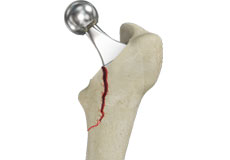
Femur Fracture
The femur or thigh bone is the longest and strongest bone in the body, connecting the hip to the knee. A femur fracture is a break in the femur.
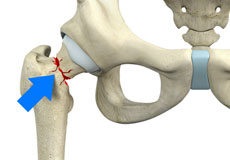
Femoral Neck Fracture
The hip is a ball-and-socket joint made up of the head of the thigh bone or femur that acts as the ball and fits into the rounded socket of the hip bone or acetabulum.
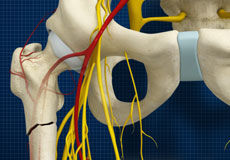
Subtrochanteric Hip Fracture
A hip fracture is a break that occurs near the hip in the upper part of the femur or thighbone. The thighbone has two bony processes on the upper part - the greater and lesser trochanters.
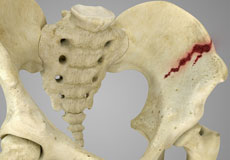
Pelvic Fracture
A pelvic fracture is a condition that occurs due to the breakage of the pelvic bone. It may cause damage to the internal organs, nerves and blood vessels associated with the pelvic region.
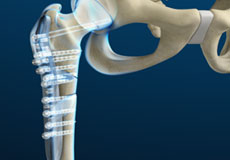
Hip Fracture Surgery
Hip fractures involve a break that occurs near the hip in the upper part of the femur or thigh bone. The thigh bone has two bony processes on the upper part - the greater and lesser trochanters.
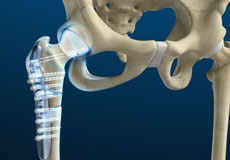
Hip Fracture ORIF
Open reduction and internal fixation (ORIF) is a surgical technique employed for the treatment of a fracture to restore normal anatomy and improve range of motion and function.

Knee Fracture
A fracture is a condition in which there is a break in the continuity of the bone. In younger individuals, these fractures are caused by high energy injuries, as from a motor vehicle accident.
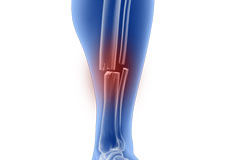
Fractures of the Tibia
The lower leg is made up of two long bones called the tibia and fibula that extend between the knee and ankle. The tibia or shinbone is the larger of the two bones.
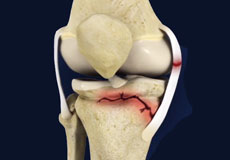
Growth Plate Fracture
Growth plates are areas of soft, cartilaginous tissues present at the end of long bones in growing children. These cartilage tissues or soft bones later harden to become solid bones in adulthood once growing has completed.
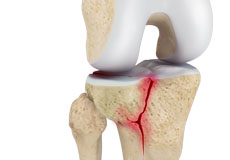
Tibial Plateau Fracture
A tibial plateau fracture is a crack or break on the top surface of the tibia or shinbone in the knee joint. The fracture most often occurs following a high-intensity trauma or injury from the impaction of the femoral condyles over the tibial plateau.
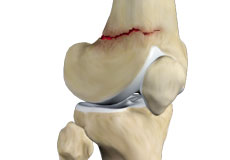
Distal Femur Fracture
The femur or thigh bone is the longest and strongest bone in the body, connecting the hip to the knee. A femur fracture is a break in the femur.

Patella Fracture
The kneecap or patella forms a part of the knee joint. It is present at the front of the knee, protecting the knee and providing attachment to various muscle groups of the thigh and leg.
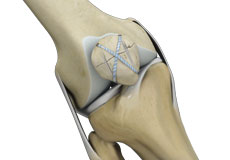
Knee Fracture Surgery
A knee fracture is a broken bone or a crack in or around the joint of the knee. This can involve the tibia (shin bone), the kneecap (patella), or femur (thighbone) where they connect with the knee.
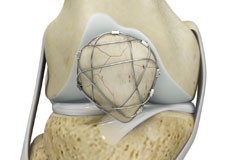
ORIF of the Knee Fracture
ORIF refers to open reduction and internal fixation. It is a surgical procedure employed for the treatment of a fracture not amenable to non-surgical conservative treatment.
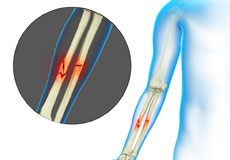
Adult Forearm Fractures
The forearm is made up of 2 bones, namely, the radius and ulna. The primary function of your forearm is rotation i.e., the ability to turn your palm up and down.
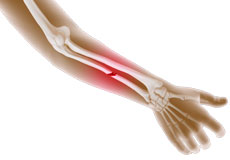
Forearm Fractures in Children
The radius (bone on the thumb side) and ulna (bone on the little-finger side) are the two bones of the forearm. Forearm fractures can occur near the wrist, near the elbow or in the middle of the forearm.
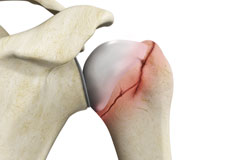
Shoulder Fracture
A break in a bone that makes up the shoulder joint is called a shoulder fracture.

Clavicle Fracture
The break or fracture of the clavicle (collarbone) is a common sports injury associated with contact sports such as football and martial arts, as well as impact sports such as motor racing.
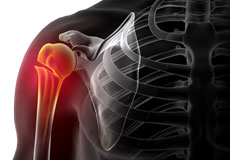
Shoulder Fracture Care
A break in the bone that makes up the shoulder joint is called a shoulder fracture. The clavicle (collarbone) and end of the humerus (upper arm bone) closest to the shoulder are the bones that usually are fractured.
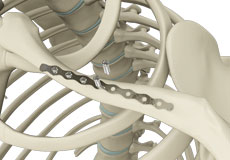
ORIF of the Clavicle Fractures
ORIF/open reduction and internal fixation is a surgical procedure employed for the treatment of a clavicle fracture not amenable to non-surgical conservative treatment.
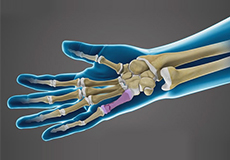
Fractures of the Hand and Fingers
A fracture is a break in the bone, which occurs when force greater than the bearable limit is applied against a bone.
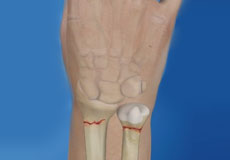
Wrist Fracture
The wrist is comprised of two bones in the forearm, the radius and ulna, and eight tiny carpal bones in the palm.
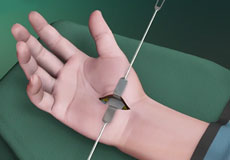
Hand Fracture Surgery
A hand fracture is a break in one of the bones in the hand, which occurs when force greater than the bearable limit is applied against a bone.
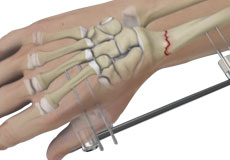
Wrist Fracture Fixation
Wrist fractures are breaks in any of the bones that form your wrist joint.
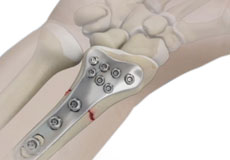
Wrist Open Reduction and Internal Fixation
Open reduction and internal fixation of the wrist is a surgical technique employed for the treatment of severe wrist fractures to restore normal anatomy and improve range of motion and function.





